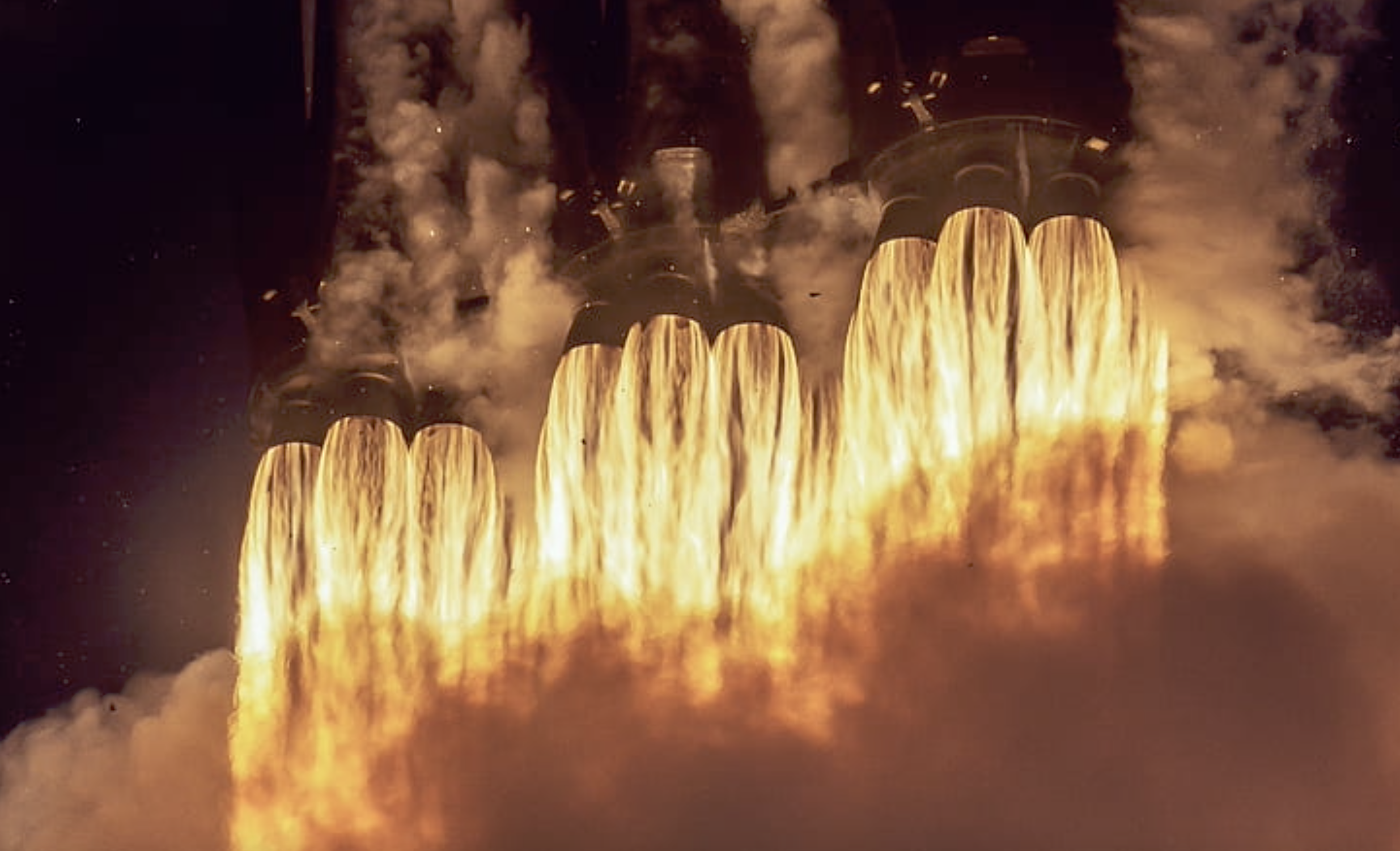At the Boca Chica facility in Texas, Space Exploration Technologies Corporation (SpaceX) is moving closer to the first stage rocket of its Starship launch vehicle platform being fired up. The Super heavy lift rocket known as Starship is being developed by SpaceX. It is not only intended to take the place of the company’s current Falcon 9 series but it will also be used for interplanetary travel.
The first stage booster will be powered by 33 rocket engines, according to SpaceX CEO Elon Musk, who tweeted a fresh photograph showing all of these engines fitted on the rocket earlier today. This represents an important step toward testing the rocket that is currently the focus of interest for a much-awaited orbital test flight that will set the stage for SpaceX’s future. This will begin the ball rolling for SpaceX’s future.
SpaceX has finished installing all of the Raptor engines on the booster, which will likely undergo testing in the near future.
The rocket, often known as the starship, is divided into two halves. The Super Heavy booster, which will utilize 33 engines to propel it off the ground, can be found at the bottom of the rocket, and the Starship spaceship, which will detach from the complete rocket after it has departed the gravitational pull of Earth, can be found atop the rocket.
At the moment, all eyes are focused on Starship booster 7, the prototype of SpaceX’s rocket that is presently being evaluated for its capacity to endure the pressures of actual operation. Now, Elon Musk has disclosed that SpaceX seems to have completed installing all 33 engines that are required for the rocket in a fresh photograph that was published earlier today.
Next up in the process of getting the rocket ready for an important test that will evaluate its fuel and propulsion systems is the installation of the booster’s engines. When compared to other rockets, which typically have between two and four engines, the Starship’s systems are far more complicated. This is because the Starship has eight engines. SpaceX, on the other hand, has a wealth of expertise in this field as well. It is the first and only organization in the world to have routinely launched a single rocket booster with nine engines, which is a design component that NASA has applauded.
After the engines have been installed, SpaceX still has to complete a few more tests before it can launch its rocket for the very first time. These include bringing the booster to the launch site and doing a wet dress rehearsal before the static fire test, which is very important. Before attempting to fire the rocket, it is necessary to do a wet dress rehearsal, which entails refueling the rocket and ensuring that all ground systems are in working order.
Musk revealed further information, including the fact that each of the 33 engines has the potential to generate 230 metric tonnes of thrust. This would suggest that SpaceX has tried each one and found no issues with them throughout their testing. There have been rumblings heard in the background suggesting that the firm is experiencing difficulties with the combustion chamber of the Raptor 2 engine. After being routed via a convoluted network of pipes and pressure pumps, the fuel (Methane) and oxidizer (Liquid Oxygen) of the rocket finally arrive at this component of the rocket, where they are combined and ignited.
The rumor has it that the chamber would melt at greater pressures, and in a test that was carried out earlier this year, we were able to see what may have transpired as a consequence of such an event has taken place. However, due to the fact that they have not been verified, the next static fire test will give essential information.
When completely assembled, Starship will be one of the biggest rockets in the world, with an astounding weight of 5,000 tonnes, also written as five-kilo tonnes. Rolling sheets of steel into cylinders, stacking the cylinders on top of each other, and then welding them together are the steps that SpaceX takes to construct the rocket. After the Federal Aviation Administration (FAA) has finished conducting an environmental examination of the firm’s facilities, the company will be allowed to submit an application for a launch license. In the meanwhile, the corporation must wait.
Source: WCCFTECH

